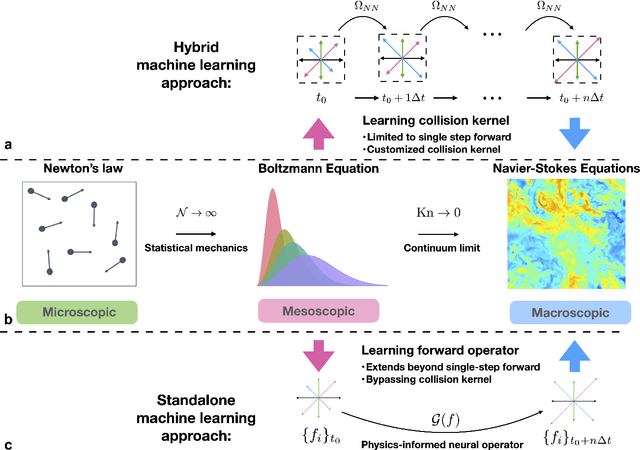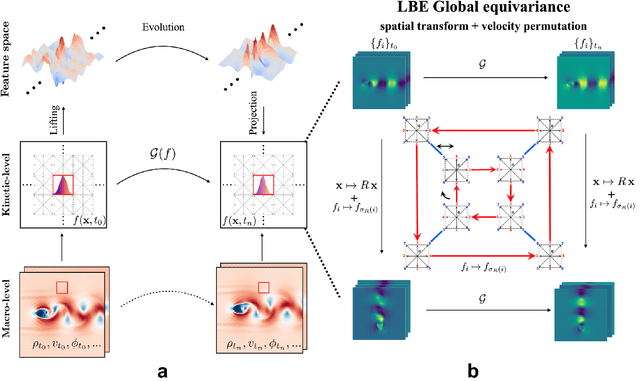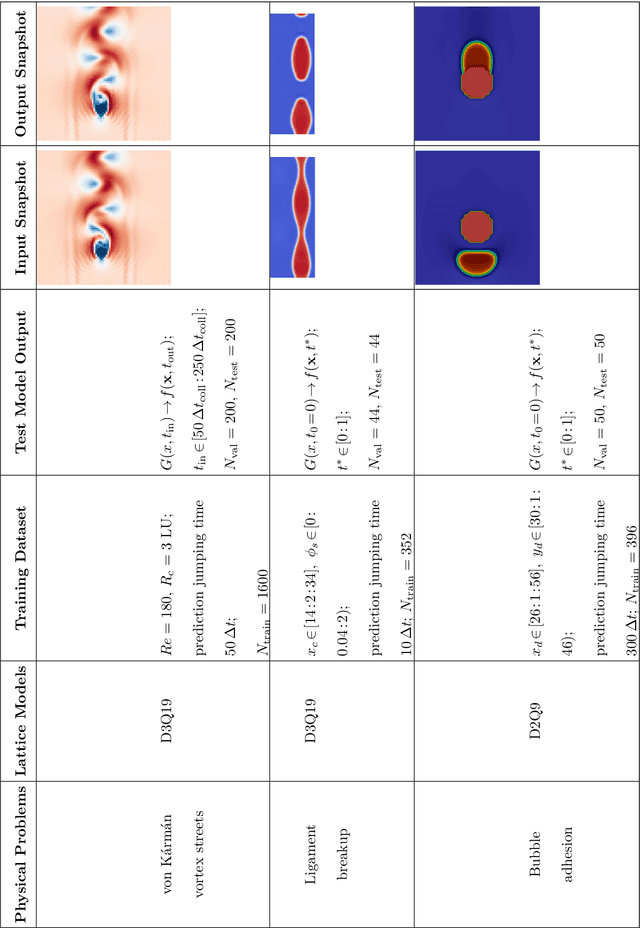Yiming Yang
Kuaishou Technology
A 100-GHz CMOS-Compatible RIS-on-Chip Based on Phase-Delay Lines for 6G Applications
Dec 21, 2025Abstract:On-chip reconfigurable intelligent surfaces (RIS) are expected to play a vital role in future 6G communication systems. This work proposed a CMOS-compatible on-chip RIS capable of achieving beam steering for the first time. The proposed unit cell design is a combination of a slot, a phase-delay line with VO2, and a ground. Under the two states of the VO2, the unit cell has a 180 deg phase difference at the center frequency, while maintaining reflection magnitudes better than -1.2 dB. Moreover, a 60by60 RIS array based on the present novel unit is designed, demonstrating the beam-steering capability. Finally, to validate the design concept, a prototype is fabricated, and the detailed fabrication process is presented. The measurement result demonstrates a 27.1 dB enhancement between ON and OFF states. The proposed RIS has the advantages of low loss, CMOS-compatibility, providing a foundation for future 6G applications.
FutureX: Enhance End-to-End Autonomous Driving via Latent Chain-of-Thought World Model
Dec 12, 2025Abstract:In autonomous driving, end-to-end planners learn scene representations from raw sensor data and utilize them to generate a motion plan or control actions. However, exclusive reliance on the current scene for motion planning may result in suboptimal responses in highly dynamic traffic environments where ego actions further alter the future scene. To model the evolution of future scenes, we leverage the World Model to represent how the ego vehicle and its environment interact and change over time, which entails complex reasoning. The Chain of Thought (CoT) offers a promising solution by forecasting a sequence of future thoughts that subsequently guide trajectory refinement. In this paper, we propose FutureX, a CoT-driven pipeline that enhances end-to-end planners to perform complex motion planning via future scene latent reasoning and trajectory refinement. Specifically, the Auto-think Switch examines the current scene and decides whether additional reasoning is required to yield a higher-quality motion plan. Once FutureX enters the Thinking mode, the Latent World Model conducts a CoT-guided rollout to predict future scene representation, enabling the Summarizer Module to further refine the motion plan. Otherwise, FutureX operates in an Instant mode to generate motion plans in a forward pass for relatively simple scenes. Extensive experiments demonstrate that FutureX enhances existing methods by producing more rational motion plans and fewer collisions without compromising efficiency, thereby achieving substantial overall performance gains, e.g., 6.2 PDMS improvement for TransFuser on NAVSIM. Code will be released.
From Pretrain to Pain: Adversarial Vulnerability of Video Foundation Models Without Task Knowledge
Nov 10, 2025Abstract:Large-scale Video Foundation Models (VFMs) has significantly advanced various video-related tasks, either through task-specific models or Multi-modal Large Language Models (MLLMs). However, the open accessibility of VFMs also introduces critical security risks, as adversaries can exploit full knowledge of the VFMs to launch potent attacks. This paper investigates a novel and practical adversarial threat scenario: attacking downstream models or MLLMs fine-tuned from open-source VFMs, without requiring access to the victim task, training data, model query, and architecture. In contrast to conventional transfer-based attacks that rely on task-aligned surrogate models, we demonstrate that adversarial vulnerabilities can be exploited directly from the VFMs. To this end, we propose the Transferable Video Attack (TVA), a temporal-aware adversarial attack method that leverages the temporal representation dynamics of VFMs to craft effective perturbations. TVA integrates a bidirectional contrastive learning mechanism to maximize the discrepancy between the clean and adversarial features, and introduces a temporal consistency loss that exploits motion cues to enhance the sequential impact of perturbations. TVA avoids the need to train expensive surrogate models or access to domain-specific data, thereby offering a more practical and efficient attack strategy. Extensive experiments across 24 video-related tasks demonstrate the efficacy of TVA against downstream models and MLLMs, revealing a previously underexplored security vulnerability in the deployment of video models.
Fast-Forward Lattice Boltzmann: Learning Kinetic Behaviour with Physics-Informed Neural Operators
Sep 26, 2025


Abstract:The lattice Boltzmann equation (LBE), rooted in kinetic theory, provides a powerful framework for capturing complex flow behaviour by describing the evolution of single-particle distribution functions (PDFs). Despite its success, solving the LBE numerically remains computationally intensive due to strict time-step restrictions imposed by collision kernels. Here, we introduce a physics-informed neural operator framework for the LBE that enables prediction over large time horizons without step-by-step integration, effectively bypassing the need to explicitly solve the collision kernel. We incorporate intrinsic moment-matching constraints of the LBE, along with global equivariance of the full distribution field, enabling the model to capture the complex dynamics of the underlying kinetic system. Our framework is discretization-invariant, enabling models trained on coarse lattices to generalise to finer ones (kinetic super-resolution). In addition, it is agnostic to the specific form of the underlying collision model, which makes it naturally applicable across different kinetic datasets regardless of the governing dynamics. Our results demonstrate robustness across complex flow scenarios, including von Karman vortex shedding, ligament breakup, and bubble adhesion. This establishes a new data-driven pathway for modelling kinetic systems.
Towards Community-Driven Agents for Machine Learning Engineering
Jun 25, 2025Abstract:Large language model-based machine learning (ML) agents have shown great promise in automating ML research. However, existing agents typically operate in isolation on a given research problem, without engaging with the broader research community, where human researchers often gain insights and contribute by sharing knowledge. To bridge this gap, we introduce MLE-Live, a live evaluation framework designed to assess an agent's ability to communicate with and leverage collective knowledge from a simulated Kaggle research community. Building on this framework, we propose CoMind, a novel agent that excels at exchanging insights and developing novel solutions within a community context. CoMind achieves state-of-the-art performance on MLE-Live and outperforms 79.2% human competitors on average across four ongoing Kaggle competitions. Our code is released at https://github.com/comind-ml/CoMind.
Maximal Update Parametrization and Zero-Shot Hyperparameter Transfer for Fourier Neural Operators
Jun 24, 2025Abstract:Fourier Neural Operators (FNOs) offer a principled approach for solving complex partial differential equations (PDEs). However, scaling them to handle more complex PDEs requires increasing the number of Fourier modes, which significantly expands the number of model parameters and makes hyperparameter tuning computationally impractical. To address this, we introduce $\mu$Transfer-FNO, a zero-shot hyperparameter transfer technique that enables optimal configurations, tuned on smaller FNOs, to be directly applied to billion-parameter FNOs without additional tuning. Building on the Maximal Update Parametrization ($\mu$P) framework, we mathematically derive a parametrization scheme that facilitates the transfer of optimal hyperparameters across models with different numbers of Fourier modes in FNOs, which is validated through extensive experiments on various PDEs. Our empirical study shows that Transfer-FNO reduces computational cost for tuning hyperparameters on large FNOs while maintaining or improving accuracy.
Towards an Introspective Dynamic Model of Globally Distributed Computing Infrastructures
Jun 24, 2025Abstract:Large-scale scientific collaborations like ATLAS, Belle II, CMS, DUNE, and others involve hundreds of research institutes and thousands of researchers spread across the globe. These experiments generate petabytes of data, with volumes soon expected to reach exabytes. Consequently, there is a growing need for computation, including structured data processing from raw data to consumer-ready derived data, extensive Monte Carlo simulation campaigns, and a wide range of end-user analysis. To manage these computational and storage demands, centralized workflow and data management systems are implemented. However, decisions regarding data placement and payload allocation are often made disjointly and via heuristic means. A significant obstacle in adopting more effective heuristic or AI-driven solutions is the absence of a quick and reliable introspective dynamic model to evaluate and refine alternative approaches. In this study, we aim to develop such an interactive system using real-world data. By examining job execution records from the PanDA workflow management system, we have pinpointed key performance indicators such as queuing time, error rate, and the extent of remote data access. The dataset includes five months of activity. Additionally, we are creating a generative AI model to simulate time series of payloads, which incorporate visible features like category, event count, and submitting group, as well as hidden features like the total computational load-derived from existing PanDA records and computing site capabilities. These hidden features, which are not visible to job allocators, whether heuristic or AI-driven, influence factors such as queuing times and data movement.
RelTopo: Enhancing Relational Modeling for Driving Scene Topology Reasoning
Jun 16, 2025



Abstract:Accurate road topology reasoning is critical for autonomous driving, enabling effective navigation and adherence to traffic regulations. Central to this task are lane perception and topology reasoning. However, existing methods typically focus on either lane detection or Lane-to-Lane (L2L) topology reasoning, often \textit{neglecting} Lane-to-Traffic-element (L2T) relationships or \textit{failing} to optimize these tasks jointly. Furthermore, most approaches either overlook relational modeling or apply it in a limited scope, despite the inherent spatial relationships among road elements. We argue that relational modeling is beneficial for both perception and reasoning, as humans naturally leverage contextual relationships for road element recognition and their connectivity inference. To this end, we introduce relational modeling into both perception and reasoning, \textit{jointly} enhancing structural understanding. Specifically, we propose: 1) a relation-aware lane detector, where our geometry-biased self-attention and \curve\ cross-attention refine lane representations by capturing relational dependencies; 2) relation-enhanced topology heads, including a geometry-enhanced L2L head and a cross-view L2T head, boosting reasoning with relational cues; and 3) a contrastive learning strategy with InfoNCE loss to regularize relationship embeddings. Extensive experiments on OpenLane-V2 demonstrate that our approach significantly improves both detection and topology reasoning metrics, achieving +3.1 in DET$_l$, +5.3 in TOP$_{ll}$, +4.9 in TOP$_{lt}$, and an overall +4.4 in OLS, setting a new state-of-the-art. Code will be released.
Large Language Models are Demonstration Pre-Selectors for Themselves
Jun 06, 2025Abstract:In-context learning (ICL) with large language models (LLMs) delivers strong few-shot performance by choosing few-shot demonstrations from the entire training data. However, existing ICL methods, which rely on similarity or diversity scores to choose demonstrations, incur high computational costs due to repeatedly retrieval from large-scale datasets for each query. To this end, we propose FEEDER (FEw yet Essential Demonstration prE-selectoR), a novel pre-selection framework that identifies a representative subset of demonstrations containing the most representative examples in the training data, tailored to specific LLMs. To construct this subset, we introduce the "sufficiency" and "necessity" metrics in the pre-selection stage and design a tree-based algorithm to identify representative examples efficiently. Once pre-selected, this representative subset can effectively replace the full training data, improving efficiency while maintaining comparable performance in ICL. Additionally, our pre-selected subset also benefits fine-tuning LLMs, where we introduce a bi-level optimization method that enhances training efficiency without sacrificing performance. Experiments with LLMs ranging from 300M to 8B parameters show that FEEDER can reduce training data size by over 20% while maintaining performance and seamlessly integrating with various downstream demonstration selection strategies in ICL.
Sample Complexity and Representation Ability of Test-time Scaling Paradigms
Jun 05, 2025Abstract:Test-time scaling paradigms have significantly advanced the capabilities of large language models (LLMs) on complex tasks. Despite their empirical success, theoretical understanding of the sample efficiency of various test-time strategies -- such as self-consistency, best-of-$n$, and self-correction -- remains limited. In this work, we first establish a separation result between two repeated sampling strategies: self-consistency requires $\Theta(1/\Delta^2)$ samples to produce the correct answer, while best-of-$n$ only needs $\Theta(1/\Delta)$, where $\Delta < 1$ denotes the probability gap between the correct and second most likely answers. Next, we present an expressiveness result for the self-correction approach with verifier feedback: it enables Transformers to simulate online learning over a pool of experts at test time. Therefore, a single Transformer architecture can provably solve multiple tasks without prior knowledge of the specific task associated with a user query, extending the representation theory of Transformers from single-task to multi-task settings. Finally, we empirically validate our theoretical results, demonstrating the practical effectiveness of self-correction methods.
 Add to Chrome
Add to Chrome Add to Firefox
Add to Firefox Add to Edge
Add to Edge